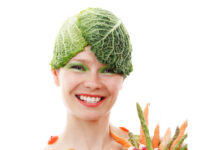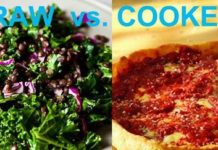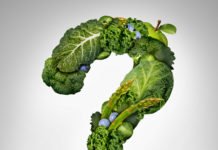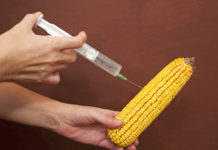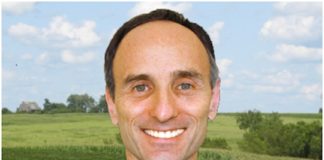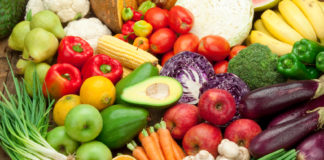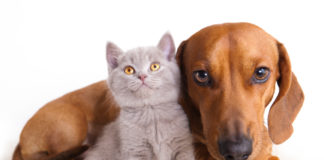We live in one of the most educated and knowledgeable societies in history, yet most of us can’t even begin to understand the actual Scientific Reasons for Raw Food. All that information is readily available. But though people may talk about the science behind a vegan or raw food diet and think they’re relying on science, the actual studies cited are usually biased or inaccurate. Very few reliable studies have ever been done specifically on vegan or raw food. So we must find a range of studies in related areas to get an idea of how a vegan, raw diet is actually less toxic and more nutritious. Here is a selection that I put together awhile back that gives some idea of the benefits of raw, vegan food.
- Neu5Gc is found only in meat and appears to have a strong link to cancer and heart disease.
Though Neu5Gc is not produced by the human body, it is usually always found in human tumors. The inflammation it causes seems to feed tumors and harden arteries.
Diversity in specificity, abundance, and composition of anti-Neu5Gc antibodies in normal humans: potential implications for disease. Glycobiology. 2008 Oct;18(10:818-30. - Arachidonic acid is found in animal products and is linked to brain inflammation, depression, anxiety, and stress.
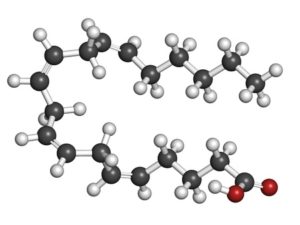 Chicken and eggs are the top sources of arachidonic acid.
Chicken and eggs are the top sources of arachidonic acid.
Arachidonic acid is used by our bodies to create inflammation. Our bodies produce all the arachidonic acid we need unlike other animals (e.g. cats who produce little to none because their bodies expect to get theirs from their diet, i.e., meat. Excess arachidonic acid causes excess inflammation.
Preliminary evidence that vegetarian diet improves mood. American Public Health Association annual conference, November 7-11, 2009. Philadelphia, PA.
National Cancer Institute. 2010. Sources of Selected Fatty Acids among the US Population, 2005–06. - Top 15 foods for Advanced Glycation end products (AGEs0 are all meat.
AGEs are gerontotoxins (AKA aging toxins). AGEs cause proteins to cross together causing stiffness, oxidation stress, and inflammation in muscles, brain tissue, eyes, heart, bone, red blood cells, and kidneys.
Does accumulation of advanced glycation end products contribute to the aging phenotype? J Gerontol A Biol Sci Med Sci. 2010 Sep;65(9:963-75. Epub 2010 May 17.
Advanced glycation end products in foods and a practical guide to their reduction in the diet. J Am Diet Assoc. 2010 Jun;110(6:911-16.e12. - A single meal of high-fat animal products has been shown to spike inflammation that can stiffen one’s arteries. High-fat animal products also cause inflammation in the lungs.
Sausage and egg McMuffins were used as the high fat meal in this study.
Effect of a single high-fat meal on endothelial function in healthy subjects. Am J Cardiol. 1997 Feb 1; 79(3:350-4. - Significant levels of bacterial toxins are found in animal products that cause endotoxemia (bacterial toxins in the bloodstream) within hours of eating.
The capacity of foodstuffs to induce innate immune activation of human monocytes in vitro is dependent on food content of stimulants of Toll-like receptors 2 and 4. Br J Nutr. 2011 Jan; 105(1:15-23. - Bacteria endotoxins from animal products survive high heat cooking for long periods, acid (like our stomachs) and digestive enzymes.
The capacity of foodstuffs to induce innate immune activation of human monocytes in vitro is dependent on food content of stimulants of Toll-like receptors 2 and 4. Br J Nutr. 2011 Jan; 105(1:15-23. - Endotoxins have a strong affinity for the fat transport system in our digestive tract.
Since our body is using our fat transport system to let in all the saturated fat which our body loves to absorb from animal products, the endotoxins slip right in.
The capacity of foodstuffs to induce innate immune activation of human monocytes in vitro is dependent on food content of stimulants of Toll-like receptors 2 and 4. Br J Nutr. 2011 Jan; 105(1:15-23. - Even wild, grass consuming animals cause inflammation in our bodies.
Inflammation was less than domestic animals. It is believe that the lower fat content in wild animals explains this.
Differences in postprandial inflammatory responses to a ‘modern’ v. traditional meat meal: a preliminary study. Br J Nutr. 2010 Sep;104(5:724-8. - Dietary fat in animals is linked to
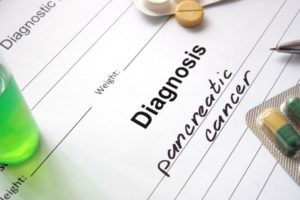 pancreatic cancer.
pancreatic cancer.
Dietary fatty acids and pancreatic cancer in the NIH-AARP diet and health study. J Natl Cancer Inst. 2009 Jul 15;101(14:1001-11. - The consumption of chicken causes urinary tract infections.
Food reservoir for Escherichia coli causing urinary tract infections. Emerg Infect Dis, 16(1:88-95, 2010. - Cholesterol has been shown to feed and promote the growth of cancer.
Cholesterol and breast cancer development. Current Opinion in Pharmacology. 2012 12 (6:677–682. - Half an egg a day or more is shown to double the odds of mouth, throat, esophageal, prostate, and bladder cancer; triple the odds of colon and breast cancer.
Egg consumption and the risk of cancer: a multisite case-control study in Uruguay. - Obesogen (chemicals that signal cells to turn into fat cells organotin) has been found in large amounts in fish.
Environmental obesogens: Organotins and endocrine disruption via nuclear receptor signaling. Endocrinology, 147(6 – Suppl:-50, 2006.
Dietary intake of organotin compounds in Finland: a market-basket study. - Meat has little or no antioxidants.
The total antioxidant content of more than 3100 foods, beverages, spices, herbs and supplements used worldwide. Nutr J. 2010 Jan 22;9:3. - High levels of PCB in fish oil, fish, and eggs (94% of eggs tested).
European Food Safety Authority; Results of the monitoring of non dioxin-like PCBs in food and feed. EFSA Journal 2010; 8(7:1701. [35 pp.]. doi:10.2903/j.efsa.2010.1701. - Harvard studies of 37,698 men and 83,644 women, over 22 and 30 years, respectively,
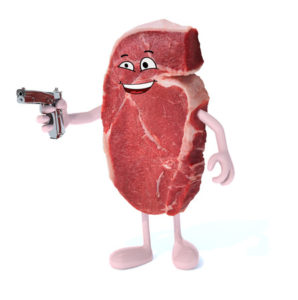 found red meat increases total mortality rates and cancer mortality rates.
found red meat increases total mortality rates and cancer mortality rates.
Red Meat Consumption and Mortality: Results From 2 Prospective Cohort Studies. Arch Intern Med. 2012;0(2012:201122871-9. - Nitrites in processed meat form nitrosamines (carcinogens also found in cigarette smoke) and are associated with the two pediatric cancers, brain tumors and childhood leukemia.
A meta-analysis of maternal cured meat consumption during pregnancy and the risk of childhood brain tumors. Neuroepidemiology. 2004 Jan-Apr;23(1-2:78-84.
Nitrites, nitrosamines, and cancer. Lancet. 1968 May 18;1(7551:1071-2. - 47% of U.S. retail meat tested is contaminated with Staphylococcus bacteria. Multidrug resistant strains were common.
Turkey was the most common with 77% and chicken and pork with 41% and 42%, respectively. A superbug version (methicillin resistant) was also found that can jump from pig to human.
Multidrug-Resistant Staphylococcus aureus in US Meat and Poultry. Clin Infect Dis. 2011 May;52(10:1227-30.
Infectious disease. From pigs to people: the emergence of a new superbug. - Eating meat just a few times a month greatly increases the chances of abdominal aortic aneurysm.
Abdominal aortic aneurysm have less than a 15% survival rate.
Analysis of risk factors for abdominal aortic aneurysm in a cohort of more than 3 million individuals. J Vasc Surg. 2010 Sep;52(3:539-48. - The liver can only detox about 50% of the heterocyclic amines (carcinogens formed from cooked chicken) — not 99% as originally thought.
The animal that can detox 99% is the lab rat, leading to the previous incorrect conclusion.
Biomonitoring of urinary metabolites of 2-amino-1-methyl-6-phenylimidazo[4,5-b]pyridine (phip following human consumption of cooked chicken. Food Chem. Toxicol., 46(9:3200-3205, 2008. - One of the longest running studies showed meat consumption increases allergies. This included asthma, bee stings, drug allergies, and hayfever.
Meat (including fish) consumed by pregnant woman can cause their children to have allergies.
Knutsen SF. Lifestyle and the use of health services. Am J Clin Nutr. 1994 May;59(5 Suppl:1171S-1175S.
Maternal meat and fat consumption during pregnancy and suspected atopic eczema in Japanese infants aged 3-4 months: the Osaka Maternal and Child Health Study. Pediatr Allergy Immunol. 2010 Feb;21(1 Pt 1:38-46. Epub 2009 Jun 23. - Putrescine has been determined to be a carcinogenic. Putrescine is found in food even when not spoiled. Highest level in canned tuna.
Toxicological Effects of Dietary Biogenic Amines. Current Nutrition & Food Science, Volume 6, Number 2, May 2010 , pp. 145-156(12
Significance of biogenic amines to food safety and human health. Food Research International, Volume 29, Issue 7, October 1996, Pages 675-690. - 100% of human Yersinia enterocolitica outbreak over the last decade was caused by pork.
Y. enterocolitica usually causes bloody diarrhea and can have very harmful long-term effects if left untreated. Half of American pig herds were infected.
Ranking the disease burden of 14 pathogens in food sources in the United States using attribution data from outbreak investigations and expert elicitation. J. Food Prot. 75, 1278 – 1291 (2012. Prevalence of pathogenic Yersinia enterocolitica strains in pigs in the United States. Appl. Environ. Microbiol. 71, 7117 – 7121 (2005).  Processed meat is greatly associated with stomach, colon, rectum, pancreatic, lung, prostate, testicular, kidney, and bladder cancer.
Processed meat is greatly associated with stomach, colon, rectum, pancreatic, lung, prostate, testicular, kidney, and bladder cancer.
Canadian Cancer Registries Epidemiology Research Group. Salt, processed meat and the risk of cancer. Eur J Cancer Prev. 2011 Mar;20(2:132-9.- Even small amounts of meat ( less than once a week) can lead to degenerative arthritis.
Associations between meat consumption and the prevalence of degenerative arthritis and soft tissue disorders in the Adventist health study, California U.S.A. J Nutr Health Aging, 10(1:7-14, 2006. - After breast cancer diagnosis, increase in saturated fat consumption increased mortality from breast cancer by 41%.
Top 5 saturated fat sources include cheese, pizza, pastries, ice cream, and chicken.
Post-diagnosis dietary factors and survival after invasive breast cancer. Breast Cancer Res Treat. 2011 Jul;128(1:229-36.
National Cancer Institute. 2010. Top Food Sources of Saturated Fat among US Population. - Poultry consumption is associated with an increase in lymphoma.
Consumption of meat and dairy and lymphoma risk in the European Prospective Investigation into Cancer and Nutrition. Int J Cancer. 2011 Feb 1;128(3:623-34. - Chicken handling significantly increased risk of dying from penile cancer, thought to be due to exposure to cancer causing viruses in poultry.
Cancer mortality in poultry slaughtering/processing plant workers belonging to a union pension fund. Environ Res. 2010 Aug;110(6:588-94. 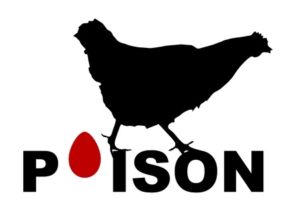 14% of retail eggs contain viruses of the leukosis/sarcoma group.
14% of retail eggs contain viruses of the leukosis/sarcoma group.
These viruses are one of the most potent cancer causing viruses in chicken. Virus exposure to humans seems to increase risk of dying from several different cancers.
Detection of exogenous and endogenous avian leukosis virus in commercial chicken eggs using reverse transcription and polymerase chain reaction assay. Avian Pathology (1999 28, 385±392
Cancer mortality in poultry slaughtering/processing plant workers belonging to a union pension fund. Environ Res. 2010 Aug;110(6:588-94.- Besides cancer, poultry workers suffer more from a range of diseases (e.g. thyroid conditions, schizophrenia, autoimmune neurological disorders, peritonitis, and disease of the kidneys.
Mortality in the Baltimore union poultry cohort: non-malignant diseases. Int Arch Occup Environ Health. 2010 Jun;83(5:543-52. - Cured meat seems to increase the chance of chronic obstructive pulmonary disease (COPD).
COPD is defined as lung diseases like emphysema. As of 2012, COPD is the third most common killer in the United States.
Consumption of cured meats and prospective risk of chronic obstructive pulmonary disease in women. Am J Clin Nutr. 2008 Apr;87(4:1002-8. - Increased meat consumption increases the risk of developing cataracts.
Diet, vegetarianism, and cataract risk. Am J Clin Nutr. 2011 May;93(5:1128-35. - Bacteria-eating viruses (bacteriophages) have been approved as meat additives.
Bacteria-eating virus approved as food additive. FDA Consum. 2007 Jan-Feb; 41(1:20-2. - Meat contaminated with fecal food-poisoning bacteria (e.g. salmonella) can legally be sold.
Public knowledge and beliefs about diarrheal disease. Foodborne Pathog Dis. 2011 Jan; 8(1:165-7. - Meat, fish, cheese, and animal protein have been associated with an increased risk of inflammatory bowel disease (IBD).
Animal protein intake and risk of inflammatory bowel disease: The E3N prospective study. Am J Gastroenterol. 2010 Oct; 105(10:2195-201. - One of the largest studies ever links meat consumption to increased overall death, death by cancer, and death by cardiovascular disease.
Study followed 500,000 people over 10 years.
Meat intake and mortality: a prospective study of over half a million people. Arch Intern Med. 2009 March 23; 169(6: 562–571. - High intake of meat, dairy, and butter have been shown to promote skin wrinkling.
Skin wrinkling: can food make a difference? J Am Coll Nutr. 2001 Feb;20(1:71-80. - Abdominal fat has been linked to meat, egg, and milk consumption. Poultry seems to be the worst offender.
Will all Americans become overweight or obese? Estimating the progression and cost of the US obesity epidemic. Obesity (Silver Spring, 16(10:2323-2330, 2008. - Heterocyclic Amines normally only found in meat have been found in cheese and eggs.
Formation and biochemistry of carcinogenic heterocyclic aromatic amines in cooked meats. Toxicol Lett. 2007 Feb 5;168(3:219-27. Epub 2006 Nov 16. - Kidney failure is linked to meat.
Meat consumption was caused human proteins to be urinated out, which should never happen.
Associations of diet with albuminuria and kidney function decline. Clin J Am Soc Nephrol. 2010 May; 5(5:836-43. - New, lower target cholesterol levels are not obtainable when meat is consumed.
High marks for below-average cholesterol. For the best protection against clogged arteries and heart disease, average cholesterol no longer makes the grade–lower is better. Harv Heart Lett. 2006 Feb;16(6:4-5. - Iron found in meat passes through the digestive system without regulation.
The body has no way to get rid of excess iron. Iron can cause oxidative stress and DNA damage. Too much iron can cause colon cancer, cardiovascular disease, infection, and inflammatory conditions.
Mechanisms of heme iron absorption: current questions and controversies. World J Gastroenterol. 2008 Jul 14; 14(26:4101-10. - Animal foods (including turkey) shown
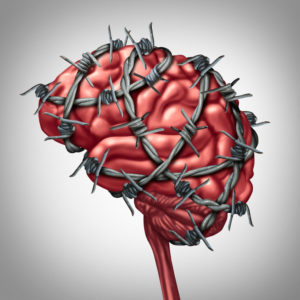 to decrease tryptophan in the brain.
to decrease tryptophan in the brain.
Tryptophan rich animal foods like turkey increase the tryptophan levels in the blood but decrease it in the brain.
Protein-source tryptophan as an efficacious treatment for social anxiety disorder: a pilot study. Can J Physiol Pharmacol. 2007 Sep;85(9:928-32. - Meat has no fiber to support healthy bacteria in our guts. That means our bacteria cannot produce propionate, used to regulate cholesterol, help us feel satisfied or regulate generation of new fat cells.
Propionate. Anti-obesity and satiety enhancing factor? Appetite. 2011 Apr;56(2:511-5. - Refined grains, eggs, and poultry shown to cause prostate enlargement the most.
Food groups and risk of benign prostatic hyperplasia. Urology. 2006 Jan;67(1:73-9. - Even when meat consumption is reduced to only fish and eggs, insulin-like growth factor (IGF-1), shown to promote cancer growth, remained relatively the same.
The associations of diet with serum insulin-like growth factor I and its main binding proteins in 292 women meat-eaters, vegetarians, and vegans. Cancer Epidemiol Biomarkers Prev. 2002 Nov;11(11:1441-8. - Arsenic, lead, mercury, lead, cadmium, polycyclic aromatic hydrocarbons (PAH) and veterinary drugs have been found in animal products.
Chemical safety of meat and meat products. Meat Sci. 2010 Sep;86(1:38-48. - Fire retardant chemicals (PBDE) and polychlorinated naphthalenes (PCNs) found in meats.
Polybrominated diphenyl ether (PBDE levels in an expanded market basket survey of U.S. food and estimated PBDE dietary intake by age and sex. Environ Health Perspect. 2006 Oct;114(10:1515-20.
Polybrominated diphenyl ethers in U.S. Meat and poultry from two statistically designed surveys showing trends and levels from 2002 to 2008. Agric Food Chem. 2011 May 25;59(10:5428-34. - Consumption of meat, fish, and dairy associated with mothers passing on DDT to their unborn child even decades after the pesticide being banned.
Organochlorine pesticides in umbilical cord blood serum of women from Southern Spain and adherence to the Mediterranean diet. Food Chem Toxicol. 2010 May;48(5:1311-5. - Perfluorochemicals (linked to thyroid disease) exposure comes from meat, fish, and eggs.
Perfluorochemicals in meat, eggs and indoor dust in China: assessment of sources and pathways of human exposure to perfluorochemicals. Environ Sci Technol. 2010 May 1;44(9:3572-9. - 30 year follow up of multiple sclerosis patients showed 95% of those who stopped consuming saturated fat had no progression of the disease.
A 50 year follow up showed those 95% who started to consume animal fat again instantly had the disease return. The conclusion of the study said MS is mostly likely caused from saturated animal fat.
Effect of low saturated fat diet in early and late cases of multiple sclerosis. Lancet 1990 336(8706:37 – 39.
Review of MS patient survival on a Swank low saturated fat diet. Nutrition 2003 19(2:161 – 162. - Increase dairy intake can double your risk of heart attack.
Plasma and erythrocyte biomarkers of dairy fat intake and risk of ischemic heart disease. American Journal of Clinical Nutrition, 86(4:929, 2007. - Almost 80% of all antimicrobials produced are used on livestock.
2009 Summary Report on Antimicrobials Sold or Distributed for Use in Food-Producing Animals. U.S. Food and Drug Administration. 2010. - Elderly people given milk as children have triple the risk of colorectal cancer.
Childhood dairy intake and adult cancer risk: 65-y follow-up of the boyd orr cohort. American Journal of Clinical Nutrition, 86(6:1722, 2007.
- All types of meat (no matter how it is cooked) increases cancer of the uterus.
Animal food intake and cooking methods in relation to endometrial cancer risk in shanghai. Br. J. Cancer, 95(11:15861592, 2006. - Only purines (meats and fructose) increases uric acid levels in our bodies.
Uric acid increases gout, high blood pressure, obesity, diabetes, kidney disease, and cardiovascular disease.
The role of uric acid as an endogenous danger signal in immunity and inflammation. Curr Rheumatol Rep. 2011 Apr;13(2:160-6. - PhIP (a type of heterocyclic amines carcinogen) in cooked meat stimulates breast cancer cells to invade healthy cells more so than the hormone estrogen itself, even when PhIP is at low concentrations. PhIP also damages DNA and activates estrogen receptors on breast cancer cells.
PhIP has been found in mother’s breast milk. Meaning PhIP from cooked meat does make its way to the breast tissues.
The cooked food derived carcinogen 2-amino-1-methyl-6-phenylimidazo[4,5-b] pyridine is a potent oestrogen: A mechanistic basis for its tissue-specific carcinogenicity. Carcinogenesis 2004 25(12:2509 – 2517
The cooked meat-derived mammary carcinogen 2-amino-1-methyl-6-phenylimidazo[4,5-bpyridine promotes invasive behavior of breast cancer cells. Toxicology 2011 279(1 – 3:139 – 145 - Meat fumes from cooking may be hazardous for fetal development and increase the risk of cancer.
Simply being around the vapors (polycyclic aromatic hydrocarbons or PAHs) was associated with a birth weight decrease and head shrinkage.
Impact of barbecued meat consumed in pregnancy on birth outcomes accounting for personal prenatal exposure to airborne polycyclic aromatic hydrocarbons: Birth cohort study in Poland. Nutrition. 2012 Apr;28(4:372-7. - A diet high in protein, particularly animal protein, has been associated with relapse of inflammatory bowel disease and a higher risk of inflammatory bowel disease.
Diet and risk of inflammatory bowel disease. Dig Liver Dis 2012 44(3:185 – 194 - Microparticles of titanium dioxide and aluminum silicate, common additives in pastries and processed foods cause an inflammatory response in the gut wall 6x greater compared to endotoxins alone.
Most people are digesting a trillion particles of titanium dioxide a day. Researchers found these microparticles in all 18 diseased colons used for a study. No microparticles were found in the healthy colons studied. Titanium dioxide is used to make things white. Thus white powdered donuts tend to have the most titanium dioxide.
Immune potentiation of ultrafine dietary particles in normal subjects and patients with inflammatory bowel disease. J. Autoimmun. 2000 14(1:99 – 105 - Meat consumption linked to premature puberty in boys and girls.
Internal exposure to pollutants and sexual maturation in Flemish adolescents. J Expo Sci Environ Epidemiol 2011 21(3:224 – 233 - After consuming animal products human adiponectin levels drop. Hormone adiponectin appears to be protective against cellulite.
Adiponectin expression in subcutaneous adipose tissue is reduced in women with cellulite. Int. J. Dermatol. 2011 50(4:412 – 416
Meal modulation of circulating interleukin 18 and adiponectin concentrations in healthy subjects and in patients with type 2 diabetes mellitus. Am. J. Clin. Nutr. 2003 78(6:1135 – 1140 - Animal consumption linked to breast pain.
Prolactin has been shown to cause breast pain. When vegans and vegetarians in South Africa (who have lower levels of prolactin and breast pain compared to women in western civilization) were fed meat, their prolactin levels went up to match western women. Two separate studies showed significant reduction in cyclical breast pain when meat was removed from the diet.
Diet, lifestyle, and menstrual activity. Am J Clin Nutr. 1980 Jun;33(6:1192-8.
Diet and prolactin release. Lancet. 1976 Oct 9;2(7989:806-7.
Serum prolactin and oestradiol levels in women with cyclical mastalgia. Horm Metab Res. 1981 Dec;13(12:700-2. - Amino acid L-carnitine (found heavily in red meat and popular energy drinks) has been found to cause heart disease.
While our bodies can produce L-carnitine, it causes our gut bacteria to produce a toxic substance called trimethylamine oxide (TMAO). TMAO also appears to be linked to cancer.
Intestinal microbiota metabolism of l-carnitine, a nutrient in red meat, promotes atherosclerosis. Nat Med. 2013 Apr 7. - Chickens consumption and handling linked to bladder infections.
When handling frozen chicken, urinary tract infection causing bacteria end up in that person’s rectum–even when the chicken is well cooked–because the transfer happens before it is cooked. The strains are usually antibacterial resistant.
Chicken as reservoir for extraintestinal pathogenic Escherichia coli in humans, Canada. Emerging Infect. Dis. 2012 18(3:415 – 421 - Thorough cleaning with bleach after every use significantly reduces chicken pathogens in kitchens, pathogens were still detectable on some kitchen items.
All items were washed in beach. Washcloth was soaked in bleach. Bleach was allowed to sit on surfaces for 5 minutes before test results were taken. Pathogens were still found on utensils, counters, and washcloth.
The effectiveness of hygiene procedures for prevention of cross-contamination from chicken carcases in the domestic kitchen. Lett. Appl. Microbiol. 1999 29(5:354 – 358 - A 5% increase of calories from saturated fat (at the expense of calories from carbohydrates can result in a 38% lower sperm count.
Dietary fat and semen quality among men attending a fertility clinic. Hum. Reprod. 2012 27(5:1466 – 1474 - Xenoestrogens (human made chemicals with estrogenic effects) have been found the most in fish.
Role of environmental estrogens in the deterioration of male factor fertility. Fertil Steril. 2002 Dec;78(6:1187-94. - Fish eaters have been shown to have only a fraction of the sperm count of vegans.
Role of environmental estrogens in the deterioration of male factor fertility. Fertil Steril. 2002 Dec;78(6:1187-94. - The American Heart Association took legal action through the FDA (which was upheld by the Supreme Court) to have the egg industry stop promoting eggs as having no harmful effects on your health.
Dietary cholesterol, serum cholesterol, and risks of cardiovascular and noncardiovascular diseases. Am. J. Clin. Nutr. 1998 67(3:488 – 492 - Meat handlers have a much high mortality rate of cancer.
Cancer mortality in workers employed in cattle, pigs, and sheep slaughtering and processing plants. Environ Int 2011 37(5:950 – 959. 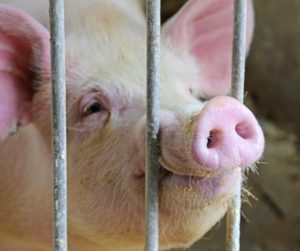 Growing up on animal farms increases the chance of blood cancers.
Growing up on animal farms increases the chance of blood cancers.
Growing up on farms only growing crops showed no increased chance of blood cancers.
Farming, growing up on a farm, and haematological cancer mortality. Occup Environ Med 2012 69(2:126 – 132.- Eating meat may cause cellular cannibalism thus explaining autoimmune attack (rheumatoid arthritis).
Auto-immune polyradiculoneuropathy has never been found to be caused by plant consumption.
Meat-induced joint attacks, or meat attacks the joint: rheumatism versus allergy. Nutr Clin Pract. 2010 Feb;25(1:90-1.
Auto-immune polyradiculoneuropathy and a novel IgG biomarker in workers exposed to aerosolized porcine brain. J. Peripher. Nerv. Syst. 2011 16 (Suppl 1:34 – 37 - Methionine (an amino acid) is required for many cancers and tumors to stay alive and grow. Methionine is virtually only found in animal products.
The effect of replacement of methionine by homocystine on survival of malignant and normal adult mammalian cells in culture. Proc. Natl. Acad. Sci. USA 1974 71(4:1133 – 1136. - Meat is acidic which causes higher risk of kidney stones and lower urine acid clearance.
Diet-induced metabolic acidosis. Clin Nutr 2011 30(4:416 – 421. - Choline, a substance very high in eggs, can cause trimethylamine (the smell of rotten fish to your breath, urine, sweat, and vagina).
Smelling like dead fish: A case of trimethylaminuria in an adolescent. Clin Pediatr (Phila 2006 45(9:864 – 866. - Choline is converted to TMAO which is linked to heart disease and cancer.
Intestinal microbiota metabolism of l-carnitine, a nutrient in red meat, promotes atherosclerosis. Nat Med. 2013 Apr 7. - Choline is associated with prostate cancer progression and death.
Choline intake and risk of lethal prostate cancer: Incidence and survival. Am. J. Clin. Nutr. 2012 96(4:855 – 863. - Pork tapeworm brain infection (neurocysticercosis ) is the most common parasitic disease in the brain for people and is on the rise in the United States.
Clinical manifestations, diagnosis, and treatment of neurocysticercosis. Curr Neurol Neurosci Rep 2011 11(6:529 – 535. - Meat eaters have a lower resting metabolism compared to vegans and vegetarians.
Sympathetic nervous system activity and resting metabolic rate in vegetarians. Metab. Clin. Exp. 1994 43(5:621 – 625. - Phosphorus preservatives are being injected into meat. These phosphorus preservatives may damage blood vessels, accelerate the aging process, and contribute to osteoporosis.
Higher phosphate levels are associated with significantly lower life span.
Phosphate additives in food–a health risk. Dtsch Arztebl Int. 2012 109(4:49 – 55.
The prevalence of phosphorus-containing food additives in top-selling foods in grocery stores. J Ren Nutr. 2013 23(4:265-270. - Phosphorus preservatives injected into poultry dramatically increase the growth of food poisoning Campylobacter bacteria.
Effects of polyphosphate additives on Campylobacter survival in processed chicken exudates. Appl. Environ. Microbiol. 2010 76(8:2419 – 2424 - Chicken nuggets from 2 national food chains found actual chicken meat was not the predominant ingredient–fat was found in greater quantities along with epithelium, bone, nerve (brain and spine) and connective tissue.
The autopsy of chicken nuggets reads chicken little. Am J Med. 2013 126(11:1018-1019. - Even when looking at endurance athletes, meat eaters’ arteries are thicker (from atherosclerosis plaque) than your average vegan.
Homocysteine, circulating vascular cell adhesion molecule and carotid atherosclerosis in postmenopausal vegetarian women and omnivores. Atherosclerosis 2006 184(2:356 – 362.
Long-term low-calorie low-protein vegan diet and endurance exercise are associated with low cardiometabolic risk. Rejuvenation Res. 2007 10(2:225 – 234. - Mercury and PCB exposure from fish shown to harm fetus brain development.
Functional MRI approach to developmental methylmercury and polychlorinated biphenyl neurotoxicity. Neurotoxicology 2011 32(6:975 – 980. - Mercury in fish shown to outweigh benefits of omega-3s when it comes to brain development.
Fish consumption during child bearing age: a quantitative risk-benefit analysis on neurodevelopment. Food Chem Toxicol. 2013 54:30-34. - Due to mercury “sticking” to our bodies, women planning on getting pregnant need to avoid mercury-containing foods for a year before getting pregnant.
Fish consumption during child bearing age: A quantitative risk-benefit analysis on neurodevelopment. Food Chem. Toxicol. 2013 54(NA:30 – 34. - Pregnant women eating fish once a week give their infants more mercury than if they were injected with six mercury containing vaccines.
Speciation of methyl- and ethyl-mercury in hair of breastfed infants acutely exposed to thimerosal-containing vaccines. Clin. Chim. Acta. 2011 412(17 – 18:1563 – 1566. - Some chemicals (dioxins, PCB, and DDE) found in fish have half lives as high as 10 years.
A 10-year half-life means after 10 years only half of those chemicals are gone, so it would take a lifetime to get even close to 1 percent of your present levels.
Elimination half-lives of polychlorinated biphenyl congeners in children. Environ. Sci. Technol. 2008 42(18:6991 – 6996. - Gestational diabetes (diabetes during pregnancy) which causes abnormal fetal growth, birth defects, and infant mortality risk, is increased when meat is consumed before pregnancy.
A prospective study of dietary patterns, meat intake and the risk of gestational diabetes mellitus. Diabetologia. 2006 49(11:2604 – 2613.
Risk of gestational diabetes mellitus in relation to maternal egg and cholesterol intake. Am. J. Epidemiol. 2011 173(6:649 – 658. - Cow’s milk contains estrogen and other hormones which promote the conversion of precancerous cell to invasive cancer and enhance the progression of cancer cells.
Organic milk was used in this study.
Milk stimulates growth of prostate cancer cells in culture. Nutr Cancer. 2011 63(8:1361 – 1366. 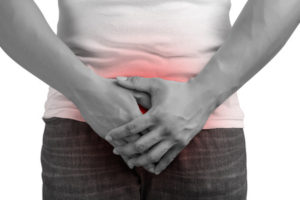 Milk consumption is a risk factor for prostate cancer.
Milk consumption is a risk factor for prostate cancer.
Milk consumption is a risk factor for prostate cancer: Meta-analysis of case-control studies. Nutr Cancer. 2004 48(1:22 – 27.
Milk consumption is a risk factor for prostate cancer in Western countries: Evidence from cohort studies. Asia Pac J Clin Nutr. 2007 16(3:467 – 476.- “Meat glue” enzyme, transglutaminase, has potential food safety and allergy implications.
Transglutaminase, gluten and celiac disease: Food for thought. Nat. Med. 1997 3(7:725 – 726. Escherichia coli O157: H7 risk assessment for production and cooking of restructured beef steaks. Report of progress (Kansas State University. Agricultural Experiment Station and Cooperative Extension Service; 873 2010. - Study found 70% of chicken breasts purchased for the study contained a cancer-causing form of arsenic beyond the safety thresholds of the FDA.
Roxarsone, inorganic arsenic, and other arsenic species in chicken: A U.S.-Based market basket sample. Environ Health Perspect. 2013 121(7:818 – 824. - Amino acid leucine has the greatest effect on increasing mTORC1 (believed to accelerate the aging process). Meat products have the most leucine.
Calorie restriction is known to down-regulate mTORC1. However, protein restriction, especially the amino acid leucine, has been found to be just as effective.
Amino acid sensing and regulation of mTORC1. Semin Cell Dev Biol. 2012 23(6:621 – 625.
Nutrient control of TORC1, a cell-cycle regulator. Trends Cell Biol. 2009 19(6:260 – 267.
Acknowledgements
My thanks to Dr. Michael Greger and Mark Insight for much of this information. I recommend subscribing to Dr. Greger’s extensive and informative YouTube channel where he posts amazing new videos virtually every day. Original scientific references above from http://badassu.net.
My thanks to Dr. Michael Greger and Mark Insight for much of this information. I recommend subscribing to Dr. Greger’s extensive and informative YouTube channel where he posts amazing new videos virtually every day. Original scientific references above from http://badassu.net.
* Links for the abstract of a study may or may not contain the supporting evidence found in the study itself. The notes section may or may not be supported by the links provided. I am not a medical professional. This article is for educational purposes only and should not be used in any other way. This article is not intended to substitute for informed medical advice. You should not use this information to diagnose or treat a health problem or disease without consulting with a qualified health care provider.


